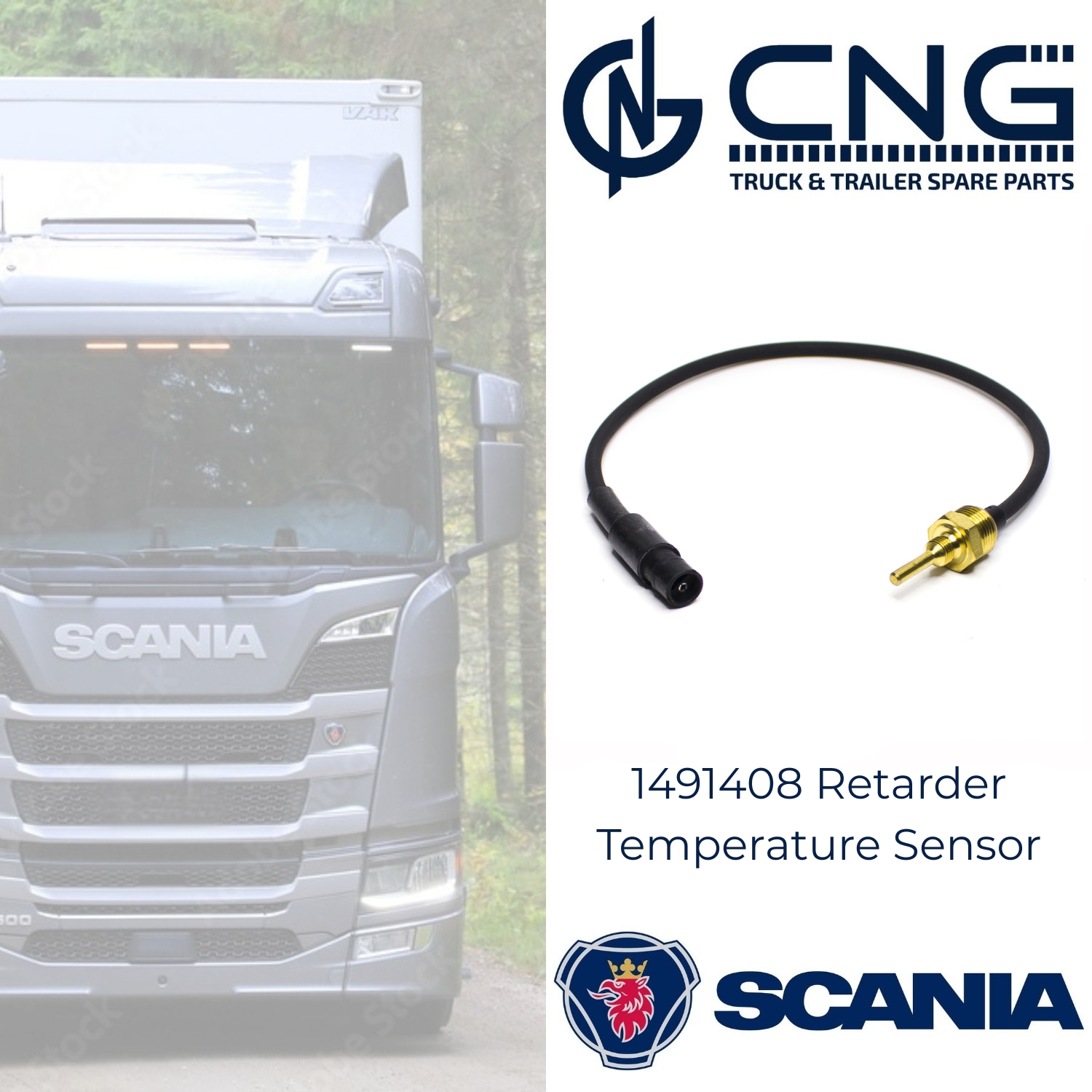
1491408 Retarder Temperature Sensor
1491408 Retarder Temperature Sensor: Functionality, Technical Details, and Industry Relevance
The 1491408 Retarder Temperature Sensor is a specialized electronic component designed to monitor temperature levels within the retarder system of heavy-duty vehicles, especially Scania trucks and buses. This sensor plays a vital safety role, ensuring the braking system operates within a safe thermal range by communicating real-time temperature data to the vehicle’s electronic control unit (ECU). As modern braking systems become more complex and dependent on auxiliary braking technologies, sensors like the 1491408 have become indispensable for fleet reliability and safety.
1. What Is a Retarder and Why Is the Temperature Sensor Critical?
A retarder is a supplementary braking system designed to help slow down a vehicle without using the traditional friction brakes. There are two common types: hydraulic and electromagnetic. Scania vehicles most commonly employ hydraulic retarders, which use viscous resistance generated through fluid motion.
During braking, the fluid heats up significantly. The 1491408 sensor is mounted directly on or near the retarder unit and is tasked with:
- Monitoring real-time fluid temperature
- Sending data to the ECU
- Triggering warnings or corrective actions if overheating occurs
Without this sensor, overheating could go unnoticed, potentially leading to system failure or reduced braking performance.
2. Technical Specifications of Scania 1491408
- Part Number: 1491408
- Brand: Scania (OEM)
- Type: Thermistor-based (typically NTC)
- Signal Output: Resistance-based signal correlated to temperature
- Connector Type: 2-pin sealed connector
- Thread: Usually M12x1.5 or M14x1.5 with integrated sealing washer or O-ring
- Operating Range: -40°C to +250°C
- Response Time: Rapid, suitable for dynamic systems under load
The sensor is robustly engineered to withstand high vibration, pressure, and thermal stress, making it ideal for placement in the driveline of commercial vehicles.
3. Primary Applications
The 1491408 sensor is fitted in Scania vehicles that utilize hydraulic retarders, commonly found in:
- Scania R-Series and S-Series
- Scania P and G-Series
- Scania Touring and Intercity buses
These vehicles are often used in:
- Long-haul transportation
- City logistics
- Coach and charter services
This sensor ensures that retarders used in steep descents or frequent braking scenarios can continue to operate efficiently without thermal failure.
4. Integration with the Vehicle’s ECU
The temperature signal from the sensor is interpreted by the ECU, which can:
- Activate cooling systems
- Reduce retarder torque output
- Alert the driver with dashboard indicators
- Log diagnostic trouble codes (DTCs)
The CAN Bus communication system is typically used in modern Scania trucks for data exchange between the sensor and control units.
5. Common Faults and Diagnostic Indicators
When the 1491408 temperature sensor fails, it can lead to the following issues:
- Retarder overheating due to lack of feedback
- Reduced braking capacity
- Fault codes (e.g., temperature sensor circuit open or short)
- Limp mode activation to protect drivetrain components
- Erratic dashboard readings
Technicians should use an OBD-II or Scania-specific diagnostic tool (e.g., SDP3) to verify fault codes related to the retarder system.
6. Replacement and Maintenance
Replacement Instructions:
- Park the vehicle and allow it to cool completely
- Locate the sensor on the retarder housing
- Disconnect the electrical connector
- Remove the sensor using an appropriate socket
- Apply a small amount of thermal grease (if recommended)
- Install the new sensor and torque to OEM specifications
Maintenance Tips:
- Inspect wiring harness for chafing or corrosion
- Avoid overtightening the sensor to prevent thread damage
- Replace the sensor as part of routine brake or retarder maintenance
7. OEM vs Aftermarket Options
Genuine Scania parts offer factory-calibrated performance, but reliable aftermarket alternatives are also available. Key factors when selecting a replacement include:
- Accurate thermal response curve
- Durable housing and sealing materials
- Compatibility with Scania’s ECU parameters
8. Packaging, Storage, and Handling
OEM and quality aftermarket sensors are packaged with anti-static and shock-resistant materials. Storage best practices:
- Store in a clean, dry, static-free environment
- Avoid exposure to direct heat or sunlight
- Keep connectors protected to avoid oxidation
Proper handling ensures the sensor’s electronics remain intact before installation.
1491408 Retarder Temperature Sensor
The Scania 1491408 Retarder Temperature Sensor is a small yet highly significant component in ensuring the operational safety and efficiency of commercial vehicles. Its ability to provide accurate, real-time data protects the braking system from thermal stress and supports optimal retarder function. Whether you’re a parts distributor, fleet operator, or technician, understanding the critical role this sensor plays is essential for maintaining vehicle uptime and reducing long-term maintenance costs. Ensuring proper replacement, handling, and quality sourcing will help keep Scania vehicles operating reliably under the most demanding conditions.
CNG SPARES
For European Truck Spare Parts Our Websites
For Turkish Visitors


